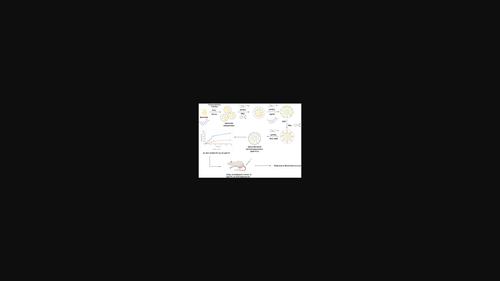Engineering of Layered Nanocarriers of Quercetin for the Treatment of Diabetes Using Box‐Behnken Design
IF 3
4区 材料科学
Q3 CHEMISTRY, PHYSICAL
引用次数: 0
Abstract
Abstract Layered nanocarriers are polymeric systems integrated with layers of glucose‐responsive polymers and polyethylene glycol monomethyl ether 2000 PEG 2000 to enhance the targeting effect and release kinetics. The prime purpose of this research study is to demonstrate a controlled release of Quercetin from formulation of quercetin (Qu)‐based layered nanocarriers (LNCs) with higher stability and anti‐diabetic activity. The QuLNCs are synthesized using the nanoprecipitation method and optimized by Box‐Behnken design of the Design of Experiment (DoE) method. The Quercetin Nanoparticles (QuNPs) are prepared using Polyvinyl alcohol (PVA) and Poly (D,L‐ lactic‐co‐glycolic acid) (PLGA) polymers where the two layers of Phenylboronic acid (PBA) are conjugated using 3‐amino propyl‐triethoxysilane (APTES) as a functionalizing agent followed by PEGylation of the entire system using PEG 2000 . The optimized QuLNCs are characterized by various parameters like Particle size (PS), Zeta potential (ZP), % Entrapment efficiency (%EE), Attenuated total reflectance‐ Fourier Transform Infrared Spectroscopy (ATR‐FTIR), Differential scanning Calorimetry (DSC), Transmission electron microscopy (TEM), in vitro as well as in vivo studies. The QuLNCs showed a % entrapment efficiency of 82.846 ± 0.957% and release of 85.04 ± 3.21% of Qu for 24 h from the layered nanocarriers. The in vivo studies of QuLNCs exhibited a significant controlled release of quercetin for modulating blood glucose levels. Hence, these results proved QuLNCs system acts as a favorable approach for the treatment of type 1 diabetes to offer a longer duration of action.

利用Box - Behnken设计制备槲皮素层状纳米载体治疗糖尿病
层状纳米载体是由多层葡萄糖响应聚合物和聚乙二醇单甲醚2000 (PEG 2000)组成的聚合物系统,以增强靶向效应和释放动力学。本研究的主要目的是证明槲皮素(Qu)基层状纳米载体(LNCs)的控释具有更高的稳定性和抗糖尿病活性。采用纳米沉淀法合成了qulnc,并通过实验设计(DoE)方法的Box - Behnken设计进行了优化。槲皮素纳米粒子(QuNPs)是用聚乙烯醇(PVA)和聚D,L -乳酸- co -乙醇酸(PLGA)聚合物制备的,其中两层苯硼酸(PBA)用3 -氨基丙基-三乙氧基硅烷(APTES)作为功能化剂偶联,然后用PEG 2000对整个体系进行聚乙二醇化。通过粒径(PS)、Zeta电位(ZP)、包裹效率(%EE)、衰减全反射-傅里叶变换红外光谱(ATR - FTIR)、差示扫描量热法(DSC)、透射电子显微镜(TEM)、体外和体内研究等参数对优化后的qulnc进行了表征。qulnc的包封效率为82.846±0.957%,24 h释放量为85.04±3.21%。qulnc的体内研究显示,槲皮素的显著控制释放调节血糖水平。因此,这些结果证明了qulnc系统作为治疗1型糖尿病的有利方法,可以提供更长的作用时间。
本文章由计算机程序翻译,如有差异,请以英文原文为准。
求助全文
约1分钟内获得全文
求助全文
来源期刊

Particle & Particle Systems Characterization
工程技术-材料科学:表征与测试
CiteScore
5.50
自引率
0.00%
发文量
114
审稿时长
3.0 months
期刊介绍:
Particle & Particle Systems Characterization is an international, peer-reviewed, interdisciplinary journal focusing on all aspects of particle research. The journal joined the Advanced Materials family of journals in 2013. Particle has an impact factor of 4.194 (2018 Journal Impact Factor, Journal Citation Reports (Clarivate Analytics, 2019)).
Topics covered include the synthesis, characterization, and application of particles in a variety of systems and devices.
Particle covers nanotubes, fullerenes, micelles and alloy clusters, organic and inorganic materials, polymers, quantum dots, 2D materials, proteins, and other molecular biological systems.
Particle Systems include those in biomedicine, catalysis, energy-storage materials, environmental science, micro/nano-electromechanical systems, micro/nano-fluidics, molecular electronics, photonics, sensing, and others.
Characterization methods include microscopy, spectroscopy, electrochemical, diffraction, magnetic, and scattering techniques.
 求助内容:
求助内容: 应助结果提醒方式:
应助结果提醒方式:


